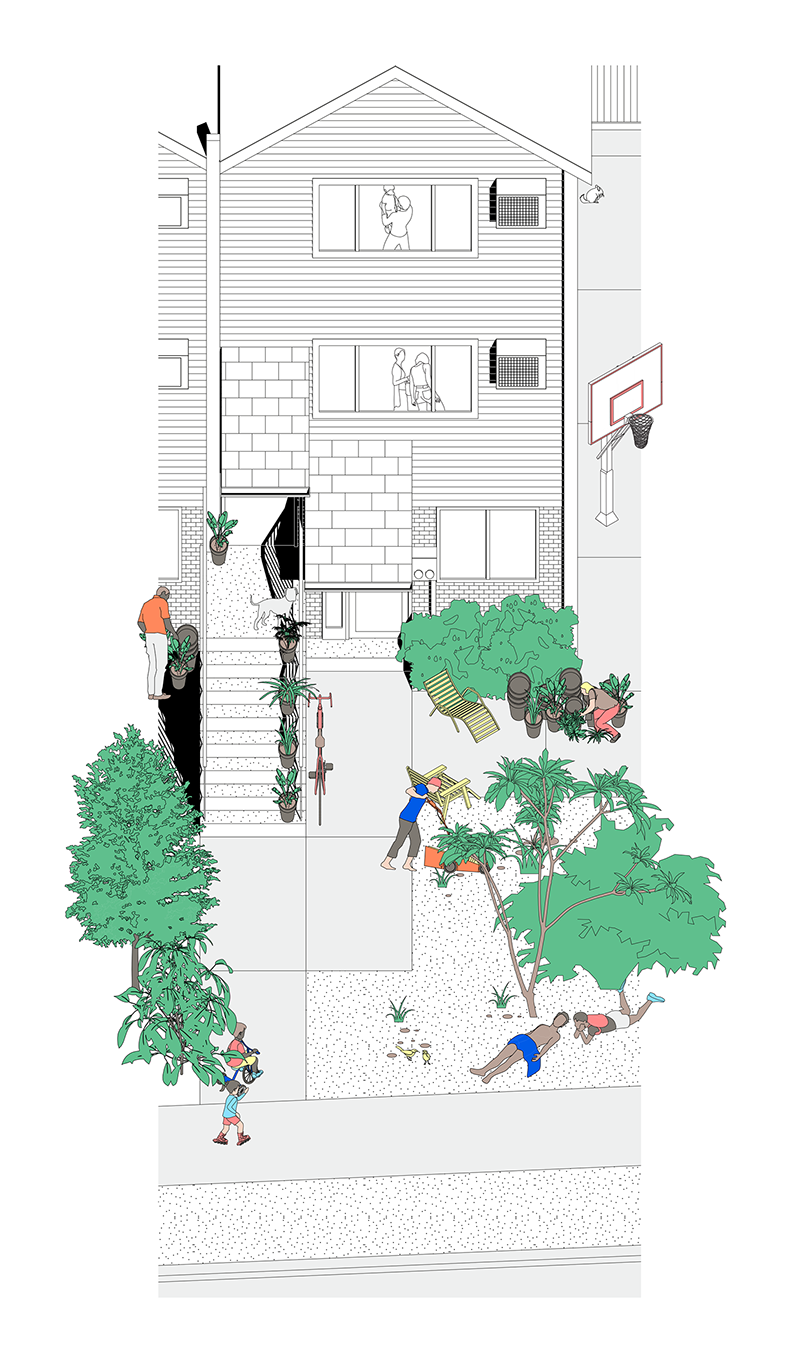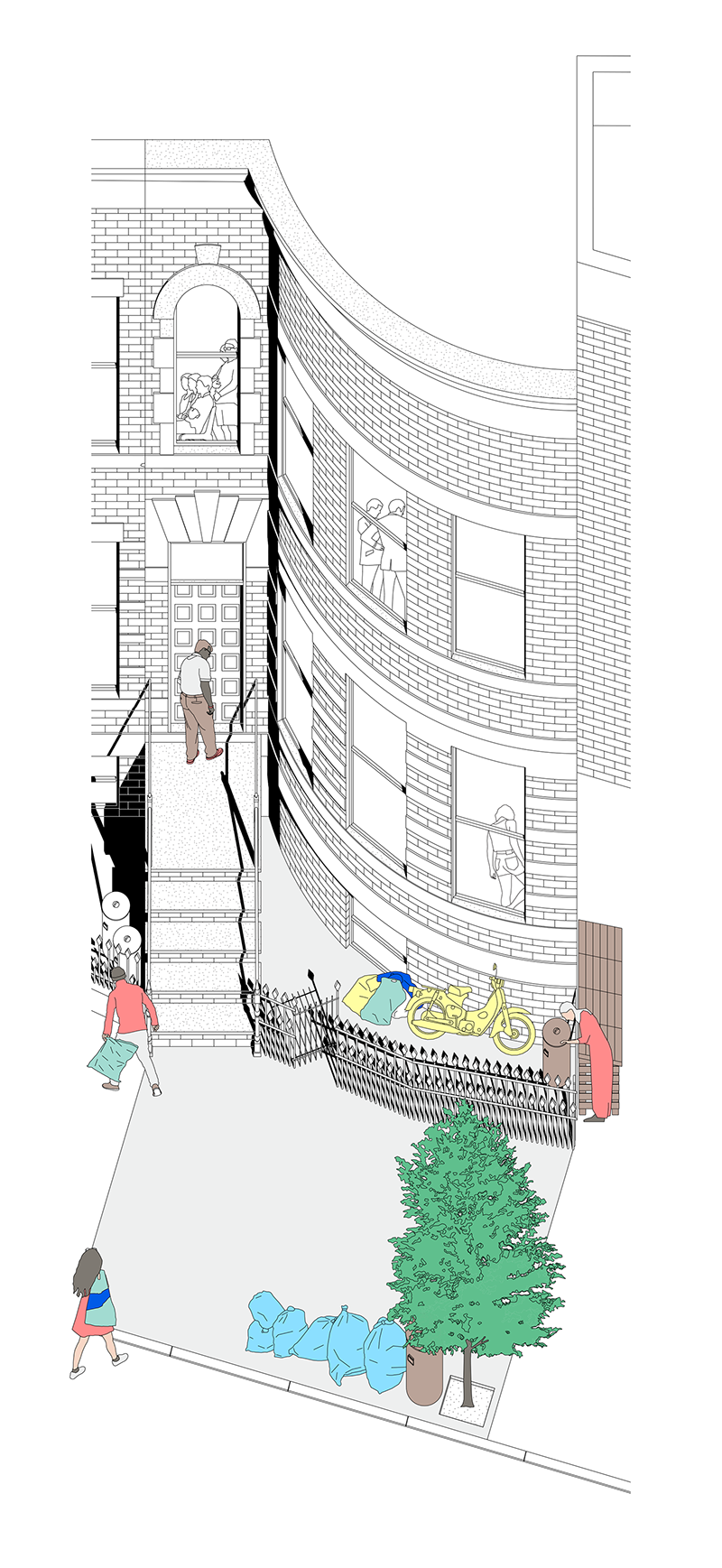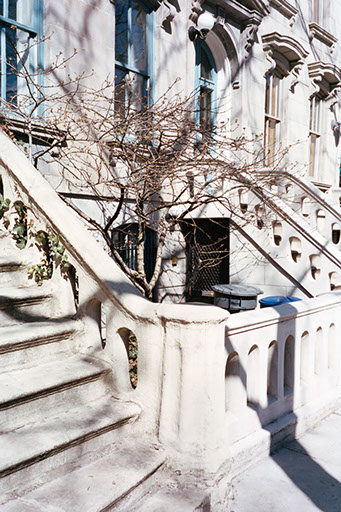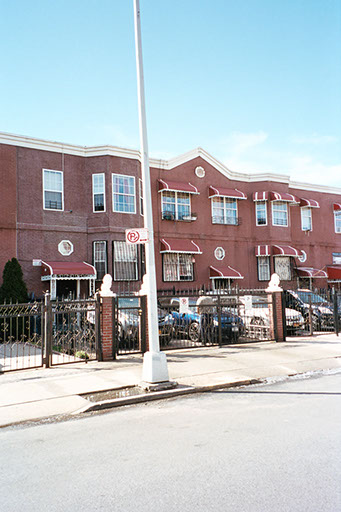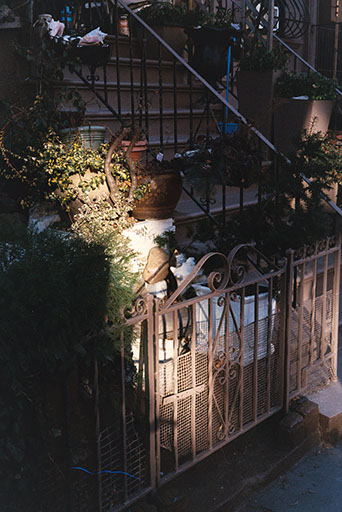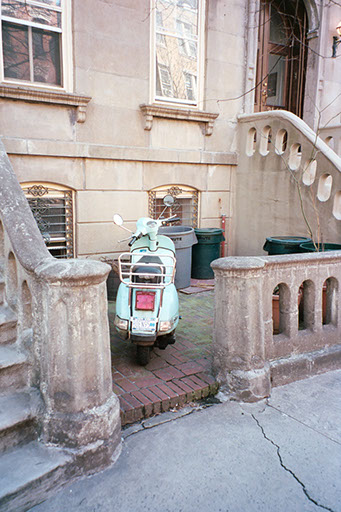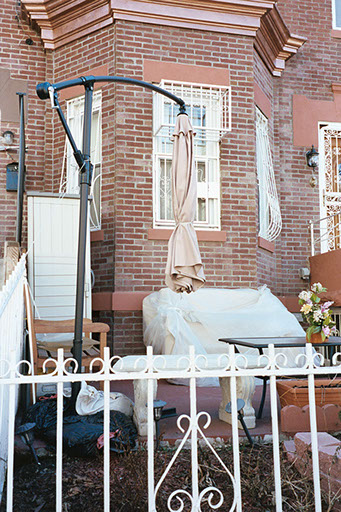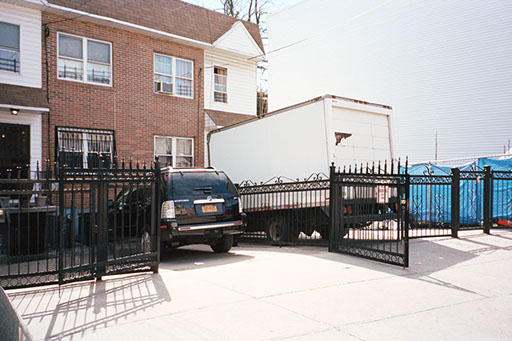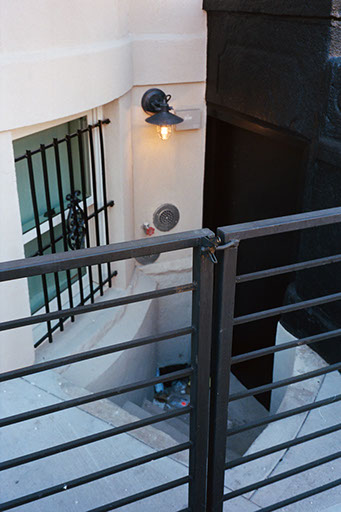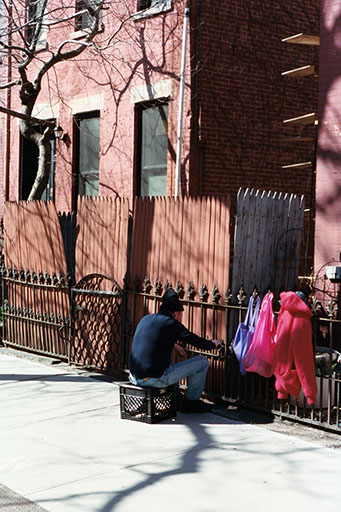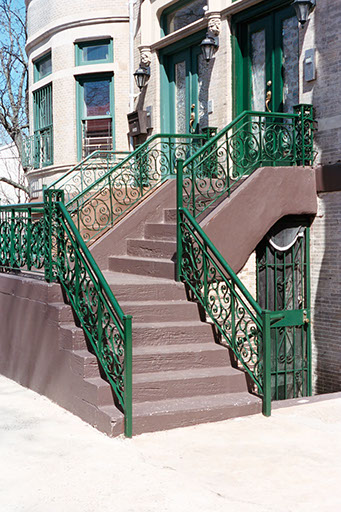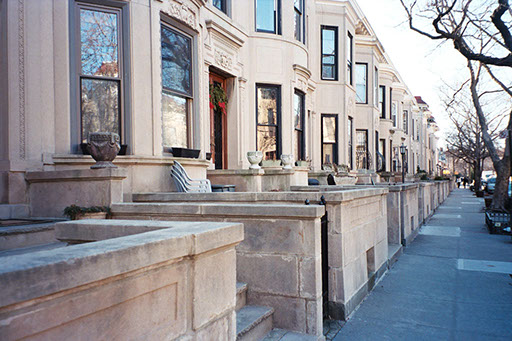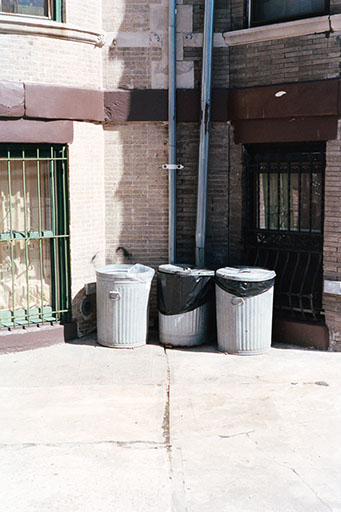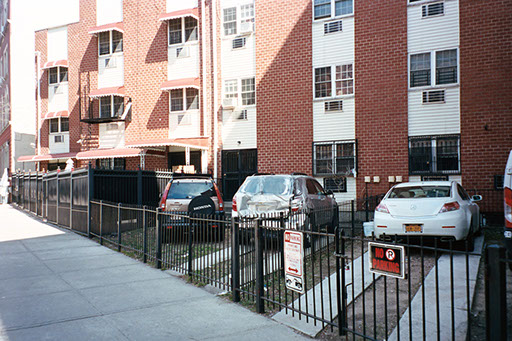with Vincent Meyer Madaus
for Urban Omnibus (The Architectural League)
Row houses make up roughly a quarter of New York City’s residential buildings, that’s a lot of street frontage. Few New Yorkers boast about their great front yards (roof access, maybe) but row house “yards” mediate much of our experience of the city. What happens in this semi-public space between the sidewalk and the front door? There are many ways, beyond the prototypical brownstone stoop, that the row house greets the street. The architectural style, era of development and local land use regulations all play a part, as do the occupants: when space is at premium, people are quick to re-purpose it for their needs. Some yards foster sociability, while others stake out private property and provide a barrier between the street and the home.
Through trips around the city–both on foot and virtually–five common uses of row house yards were documented. There’s the living room, where the yard serves as an extension of the domestic space of the home. In the garden, row house dwellers tend to lawns or create their own flowering oases from the concrete. The most well-worn example is the classic stoop, where residents perch and mix with passers-by. Then there’s the parking spot, often gated. Finally, there’s the nothing area, where residents may stash trash and bicycles but little else. Front of House includes line drawings of each of the five types, employing an oblique perspective to show how activities unfold in this space–and give the viewer a sense of peering into a miniature world below.
The analytic distance gives a fresh lens to New York’s most stalwart residential form, making the familiar a little strange. One real-life row house from four of the five boroughs serves as the backdrop for an exploration of yard usage in these detailed composite drawings which represent a hyper-real version of a typical row house street scape, whereas accompanying photographs exemplify each of these categories out in the wild. The digital publication invited to peer into how row house residents negotiate this semi-public zone and thus their neighbours and the city at large. The images were produced from an oblique perspective to change from plan to elevation by deepening the spatial reality of the found types.
with Vincent Meyer Madaus
for Urban Omnibus (The Architectural League)
05/17
New York, USA

